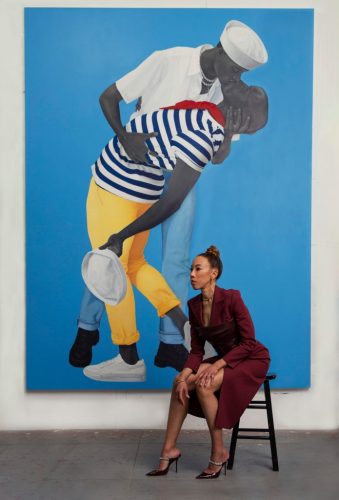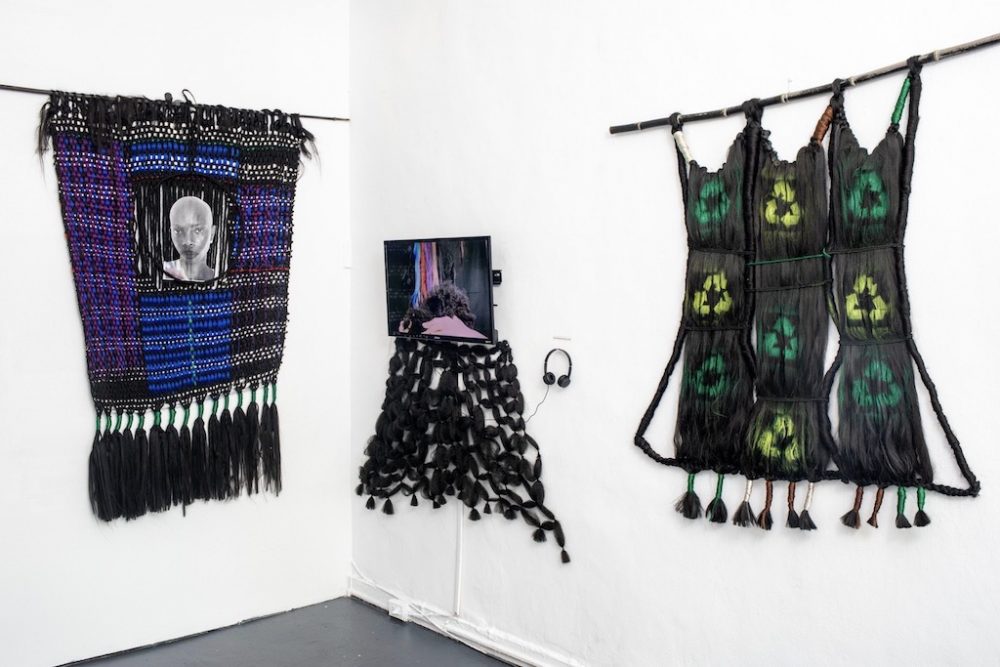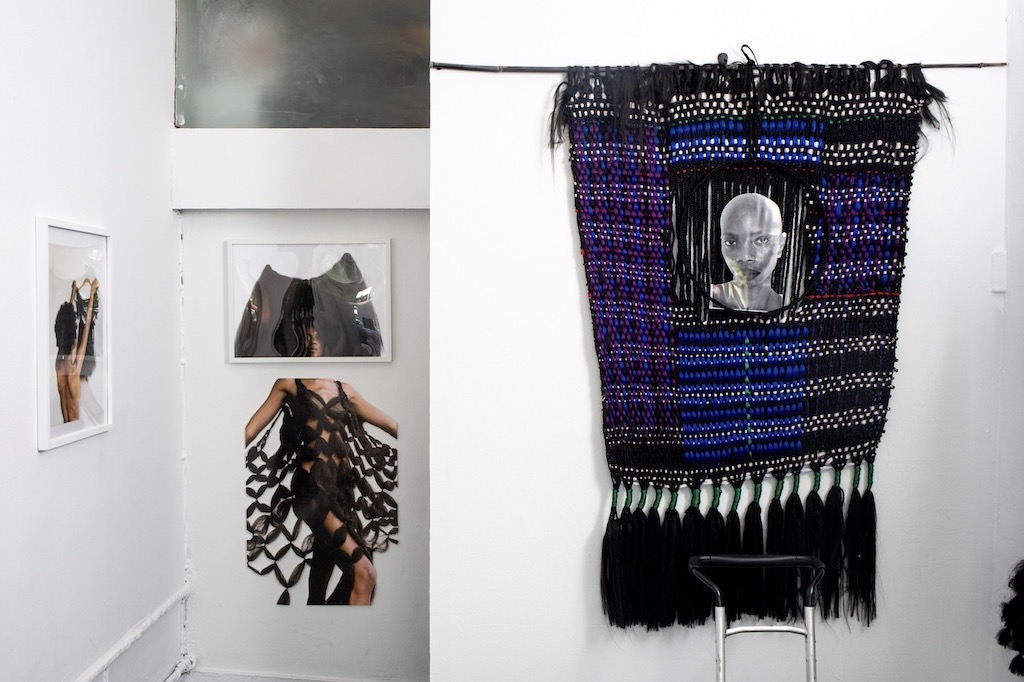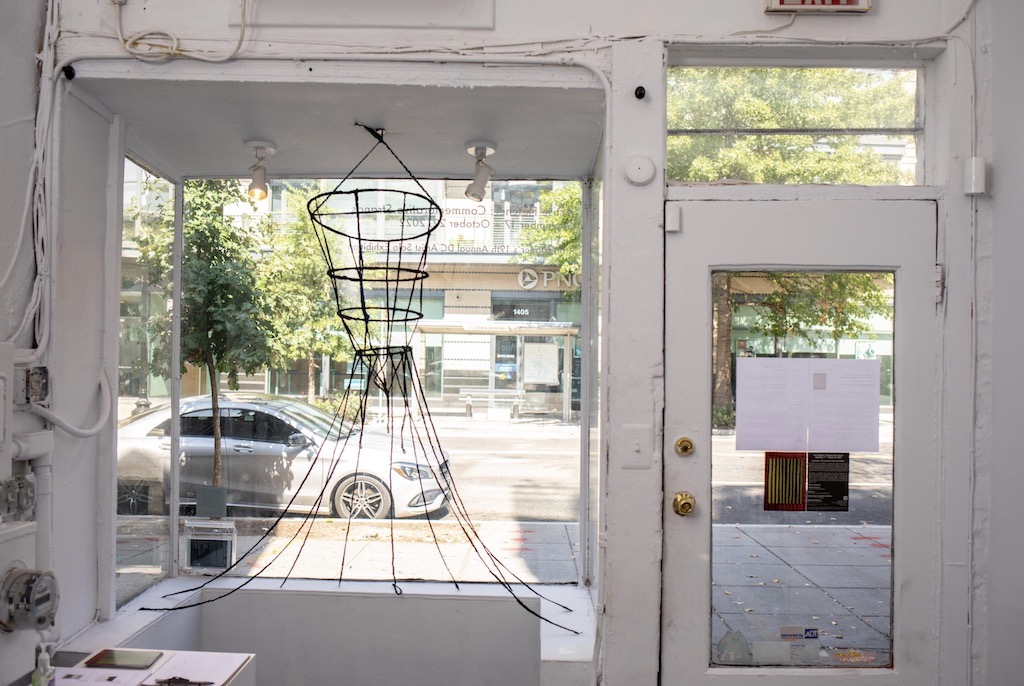Walking into one of Artise Fletcher’s textile workshops, which explore societal beauty standards and individual relationships to hair, audiences typically “come into it skeptical, not knowing what to expect,” she says. Fletcher creates her textiles with an unconventional material—Kanekalon hair. Using synthetic hair to craft ornate tapestries, the artist hopes to shift viewers’ perceptions of the value of hair.
The visual artist, based in Washington, DC, explores the intersections of identity, wellness and sustainability, and how these elements interact with hair as a medium of expression. Today, “all of my work is based in liberation and freedom of expression, and being confident in who you are, as is,” she says.
Fletcher’s first solo exhibition, Commemorative Strands, features textiles, photography and video that explore the cultural significance of Black women’s hair. Inspired by the commemorative cloths of cultures across Africa and the weaving techniques of textile artists in Chinchero, Peru, Fletcher reinvents traditional textiles in her tapestries.
Commemorative Strands is housed at Transformer gallery, a nonprofit visual arts center in DC that features the work of emerging local artists. The exhibition is accompanied by two workshops, an interactive textile activity, and a panel discussion that encourage those interacting with Fletcher’s work to think critically about their personal relationship to hair.











